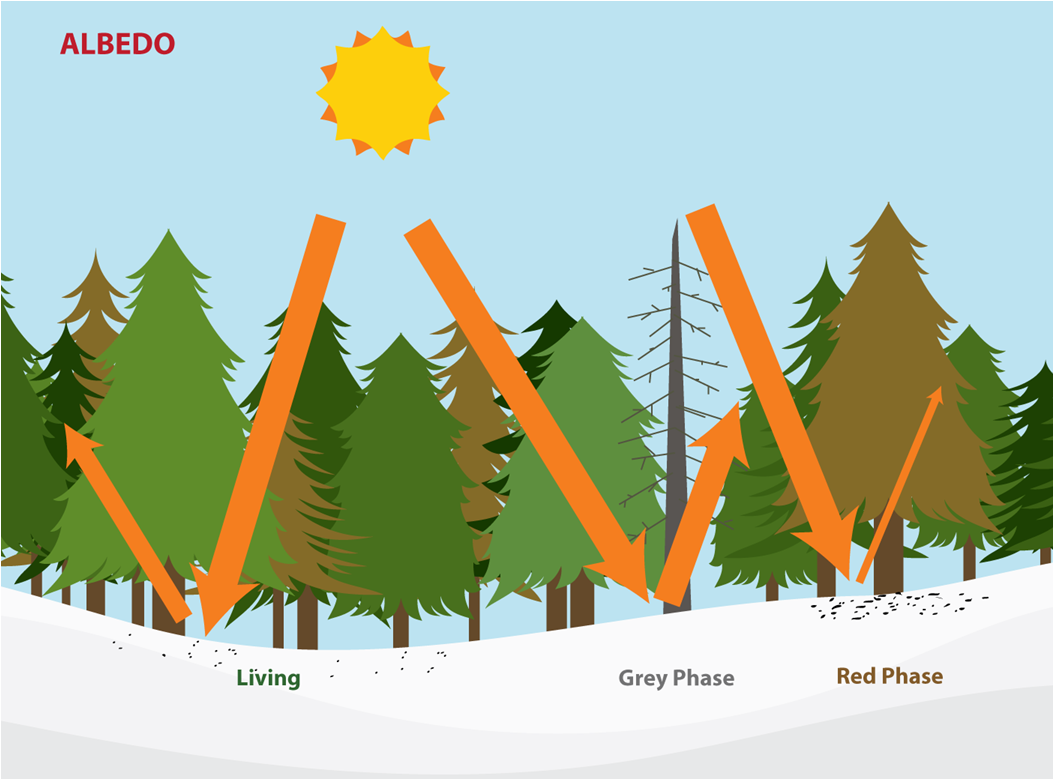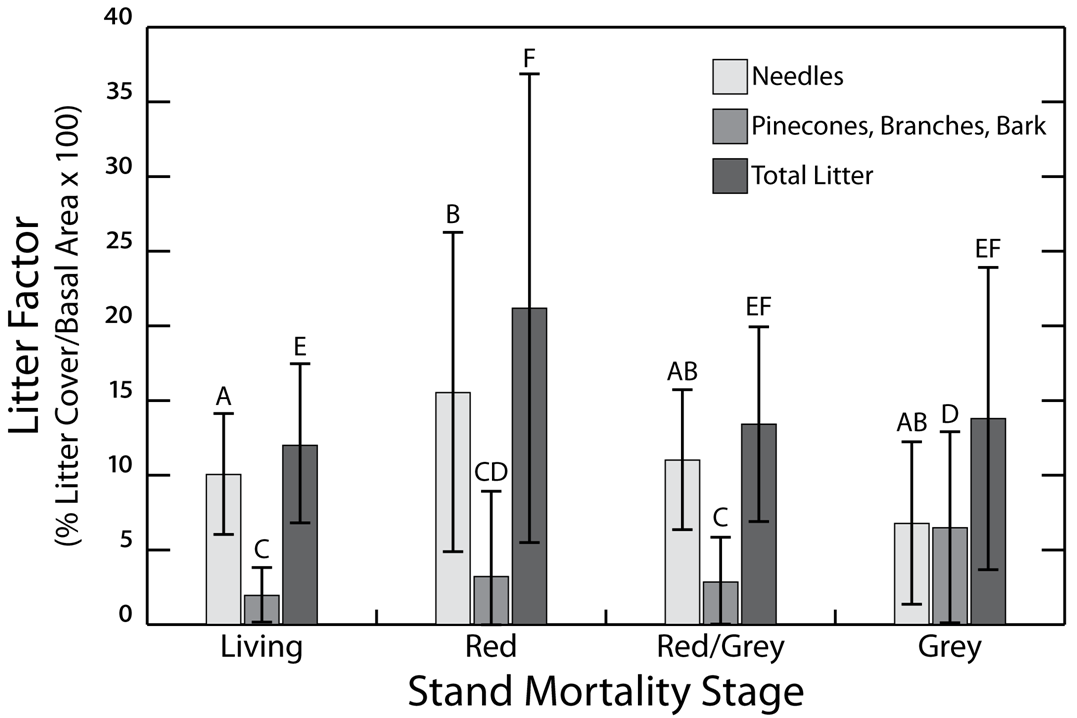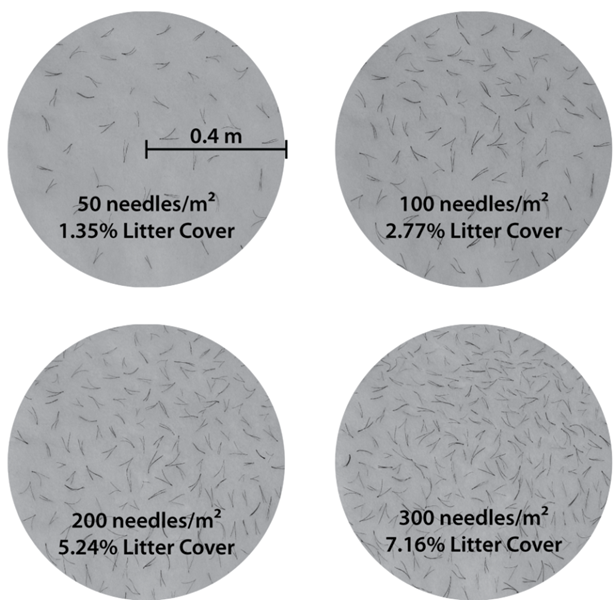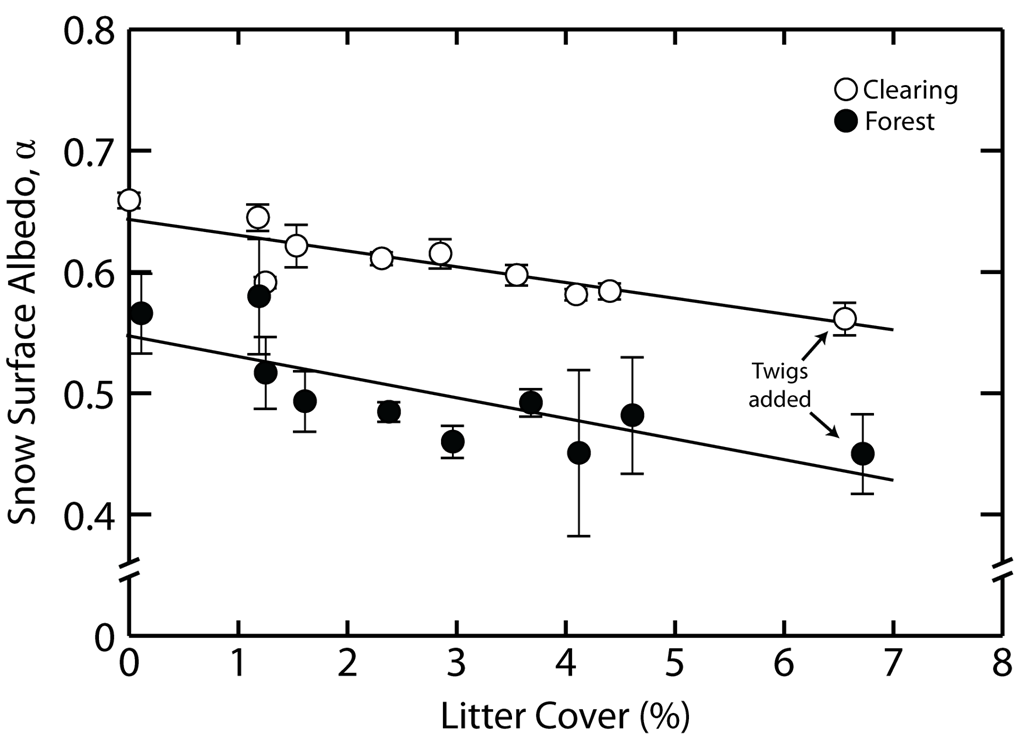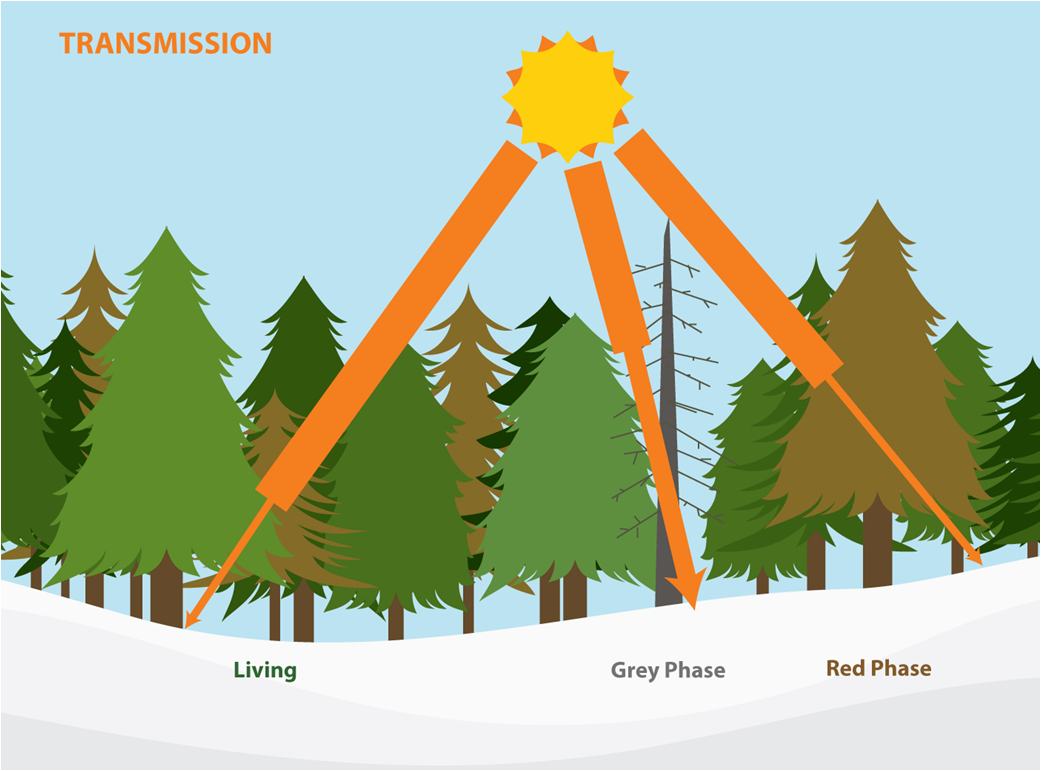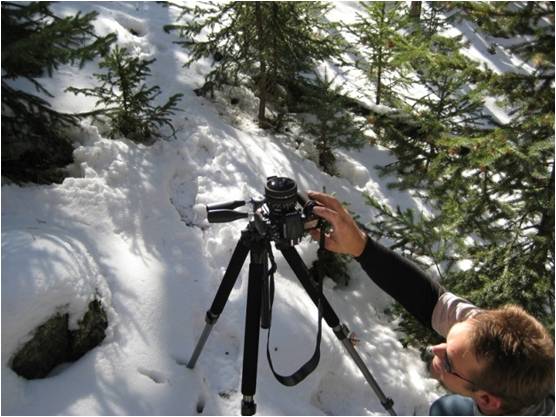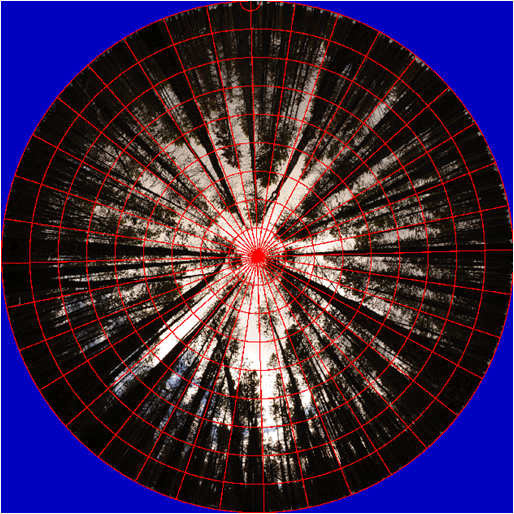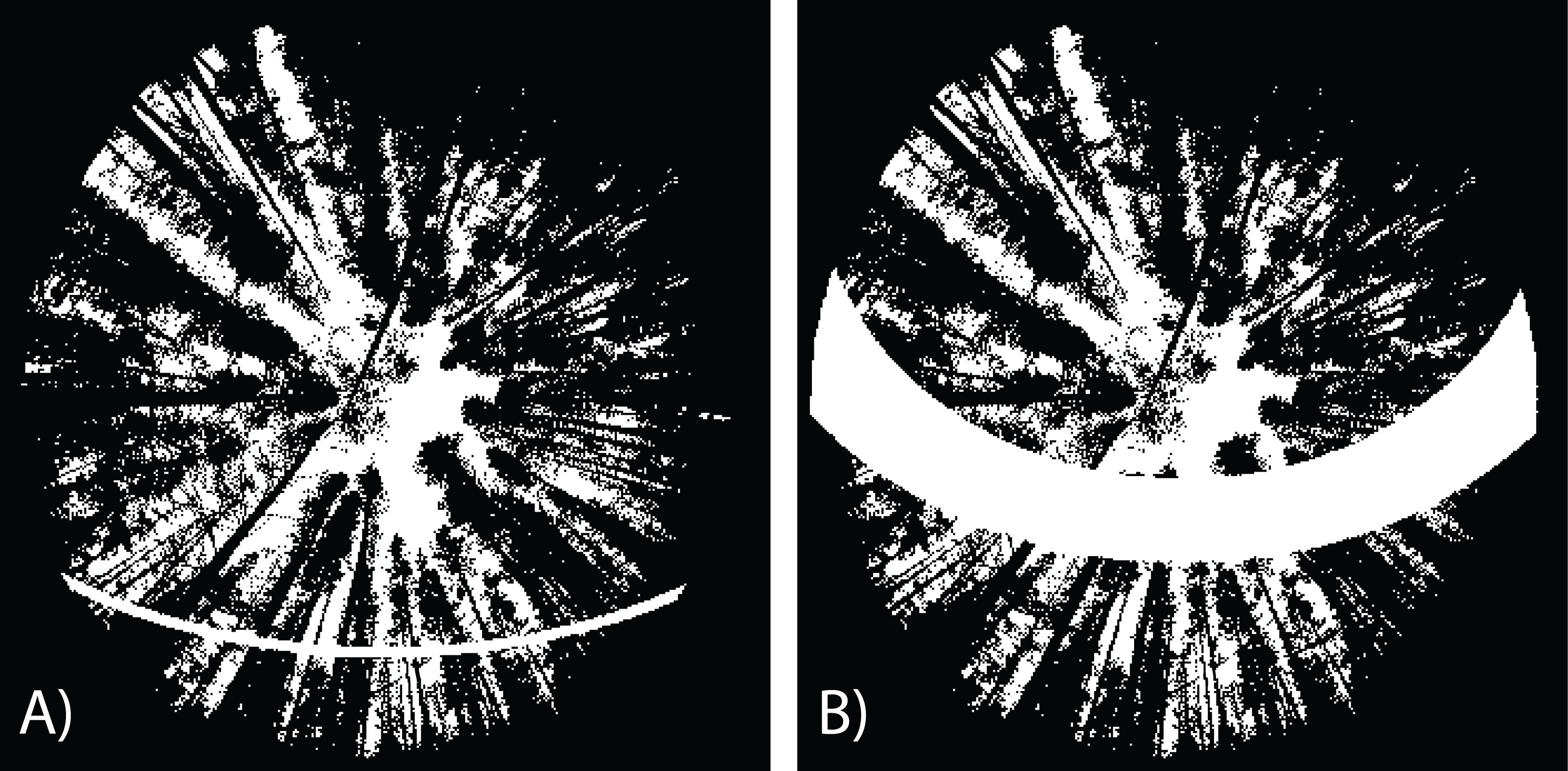 Evan Pugh, Ph.D, Geological Sciences, University of Colorado Boulder
Evan Pugh, Ph.D, Geological Sciences, University of Colorado Boulder Since 1996, the mountain pine beetle has killed more than 4 million acres of pine forest in Colorado. This impacted area is more than 2/5 of Colorado's forested watersheds.
Since 1996, the mountain pine beetle has killed more than 4 million acres of pine forest in Colorado. This impacted area is more than 2/5 of Colorado's forested watersheds.

Concepts: A complex suite of processes affect the winter forest water and energy budgets
|
Research Description
The mountain pine beetle is killing many trees in Colorado's high-elevation forests. Since 1996, Mountain Pine Beetles have killed over 4 million acres of lodgepole pine in Colorado. The thinned canopies found in dead tree stands intercept less snow and transmit more radiation than canopies in living forests, altering snow accumulation and melt processes. Additionally, falling pine needles alter snow surface albedo. We investigate the impacts of tree death on snow accumulation and melt. In the snowmelt-dominated regions of the Western US, mountain snowpack is the largest input term in the mass balance equation that must to be solved to calculate streamflow. Observed increases in snow accumulation caused by advanced tree death would yield more water from annual snowmelt.
The process of MPB-induced tree death creates two distinct classes of dead trees. During the first two years following death, a lodgepole pine's needles will change color to red and start falling off. This stage of tree death is termed the "red phase". Generally by the end of the third year after infestation, most of a dead lodgepole pine crown has been denuded of needles. Trees that have been completely denuded of needles are in what is termed the "grey phase".
To investigate the impacts of tree death on snow accumulation and melt, we have made repeated measurements of snowpack depth, density and temperature during three snow seasons at eight 3600 m2 paired study plots. The paired plots consist of one living and one dead stand. The eight dead stands varied in their extent of mortality progression, thus permitting a comparison of snowpack dynamics under a range of tree mortality phases. Additionally, experiments addressing snow surface albedo, canopy transmission, and canopy interception were conducted to examine potential differences in the subcanopy energy and water budgets between living and dead tree stands.
|
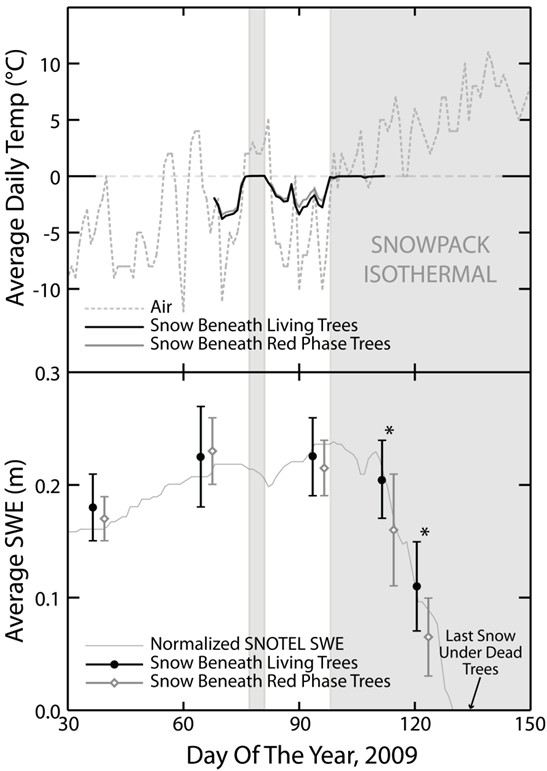
Results: 2009 snowpack record
|
Snow Accumulation and Melt
Results indicate that snow accumulation is similar between red phase and living stands, and greater in grey phase stands compared to living stands. In 2010, we observed ~15% more snow water equivalent under grey phase stands than under living stands. We hypothesize that red phase stands accumulate similar amounts of snow as living stands because they have not yet lost the majority of their canopy material (e.g. needles, small branches), allowing for normal levels of canopy interception.
Snowmelt rates were highest in the red phase stands with snow disappearance occurring one week earlier than observed at the living stand. Rapid snowmelt in red phase stands is likely the result of low snowpack albedo from increased litter deposition.
We also observed advanced snowmelt in grey phase stands, though in these stands additional snow accumulation may mitigate the effects of increased melt energy. In low snow years, grey phase stands will likely experience rapid melt due to increased sunlight penetration. Conversely, in years with above average snowfall, grey phase stands may retain snow well after the snowpack in living stands has been depleted.
| 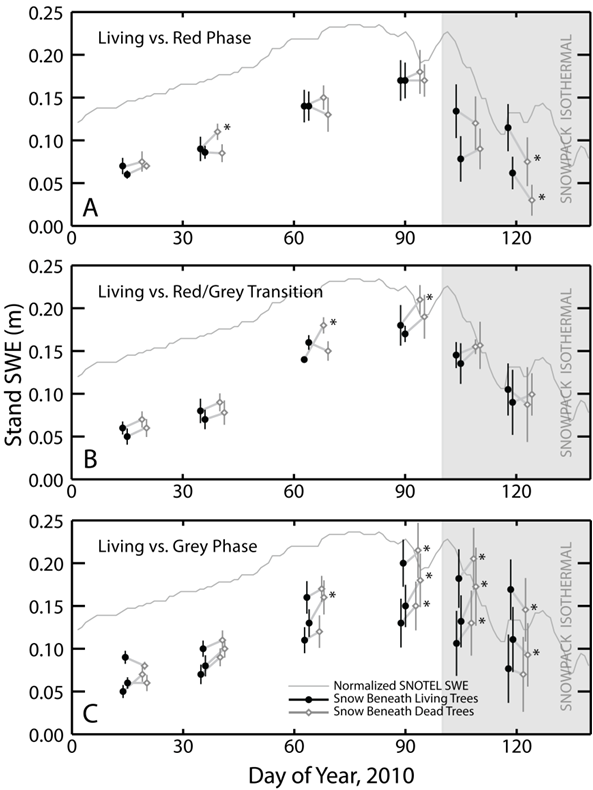
Results: 2010 snowpack record |
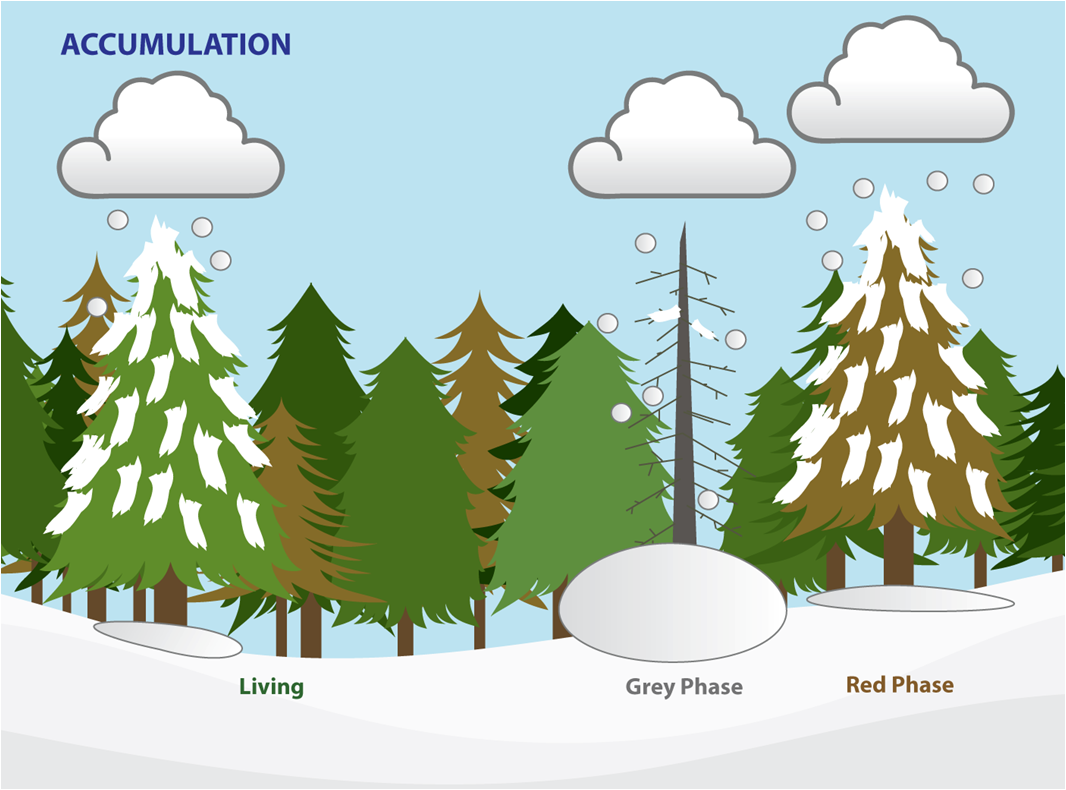
Hypothesis: Canopy snow interception in red phase stands is similar to living stand interception. However, once needles are shed, less snow is intercepted in grey phase canopies.
|
Process: Canopy Snow Interception
In winter 2011, we made daily measurements of hundreds of snowdepths under living and grey phase stands as well as in clearings. In addition to the daily readings, measurements were made immediately before and immediately after winter storms. By observing how much snow accumulated in living forests, dead forests, and clearings directly following a storm, we can estimate how much snow was caught in the canopy. Canopy snow interception is an important process because large portions (up to 40%) of intercepted snow sublimate directly back to the atmosphere, reducing snow accumulation on the ground. We observed significantly higher levels of canopy snow interception in living stands (23% compared to 8% in dead stands), which is consistent with the results of our seasonal overall snowpack monitoring (above). Reduced interception capacity in grey phase stands will lead to more water entering dead forests, which could potentially lead to higher stand water yield. We measured 20% more subcanopy snow under grey phase dead stands than comparable living stands.
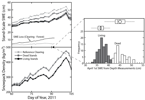 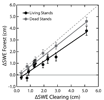  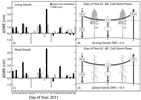
|
Publications
Pugh, E.T. and Small, E.E. (2012),
The impact of pine beetle infestation on snow accumulation and melt in the headwaters of the Colorado River.
Ecohydrology 5: 467-477. doi: 10.1002/eco.239

Pugh, E.T. and Gordon, E.S. (2012),
A conceptual model of water yield effects from beetle-induced tree death in snow-dominated lodgepole pine forests.
Hydrological Processes. doi: 10.1002/hyp.9312

Pugh, E.T. and Small, E.E. The impact of beetle-induced conifer death on stand-scale canopy snow interception.
Hydrology Research, in review.
» Data Portal «






